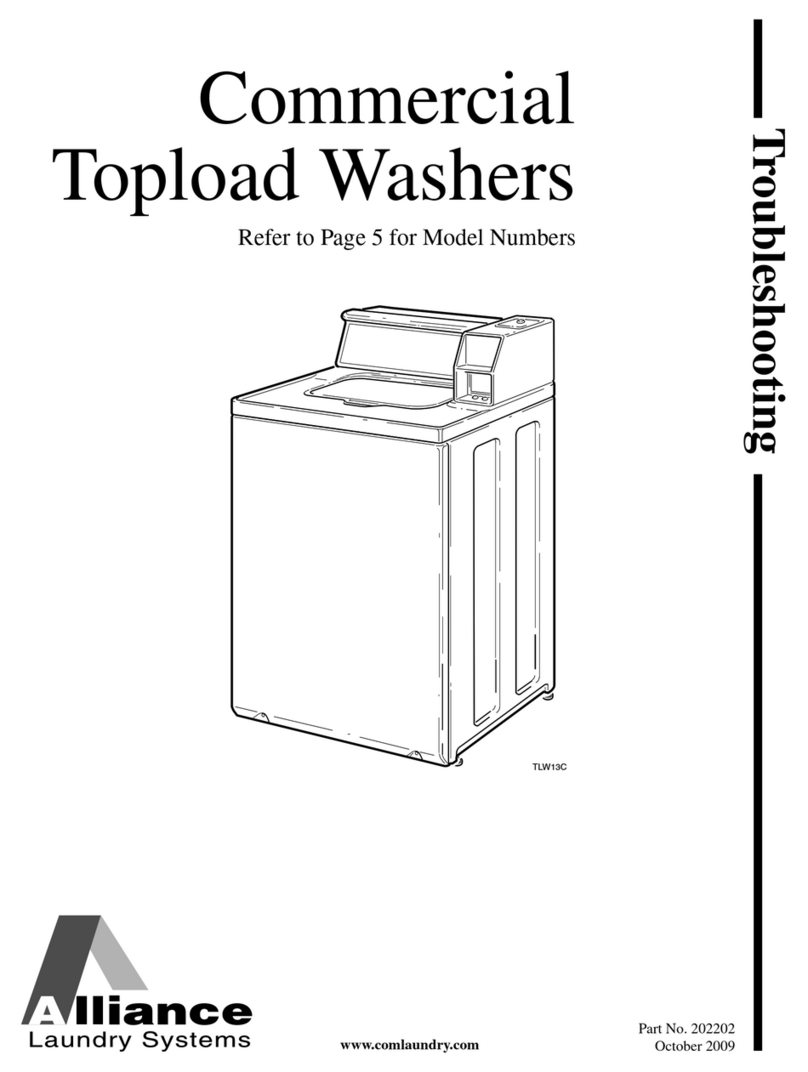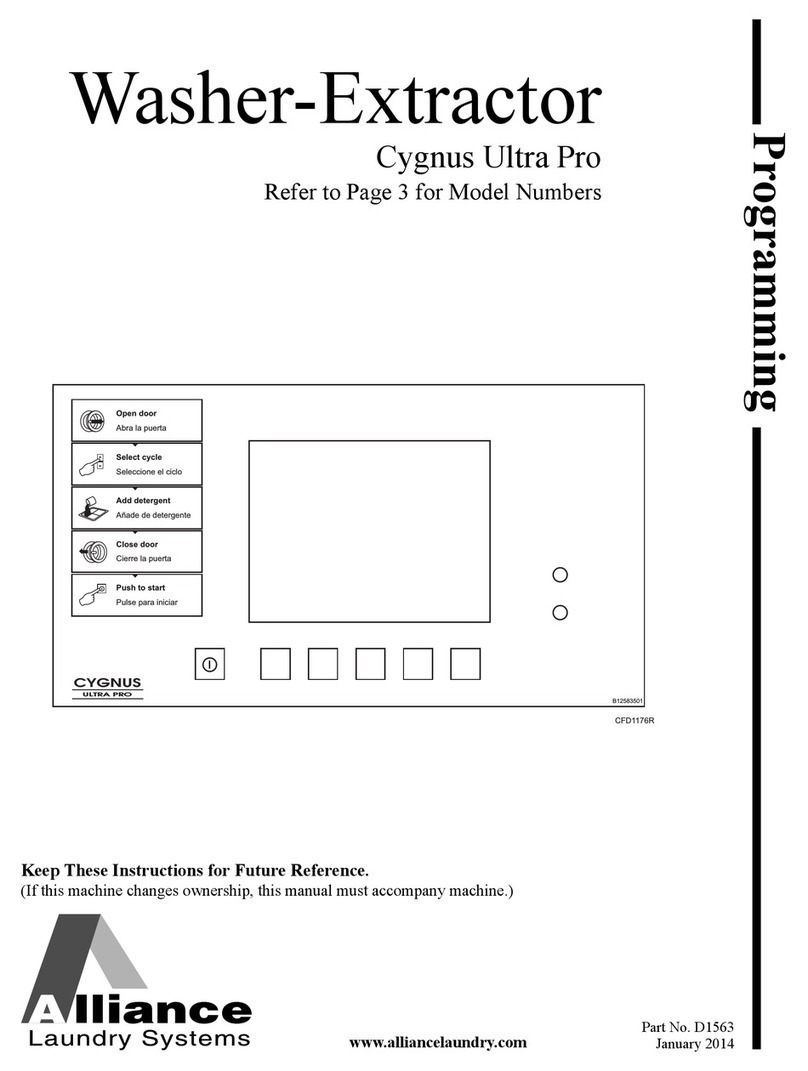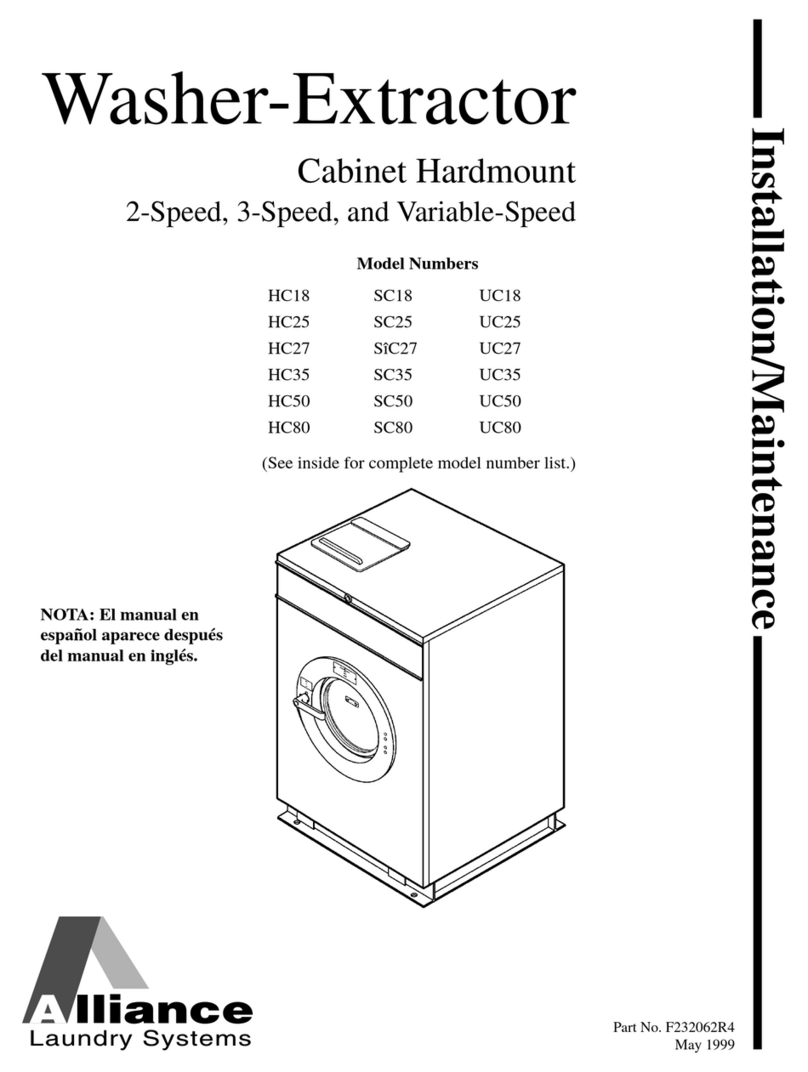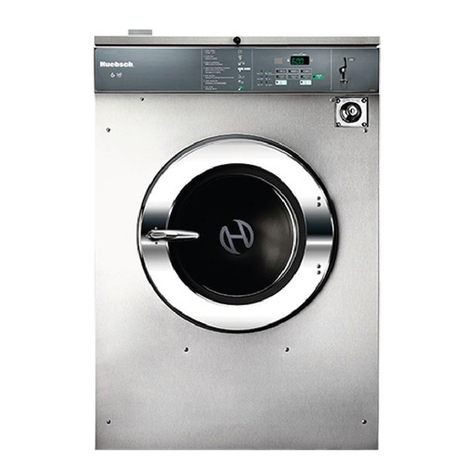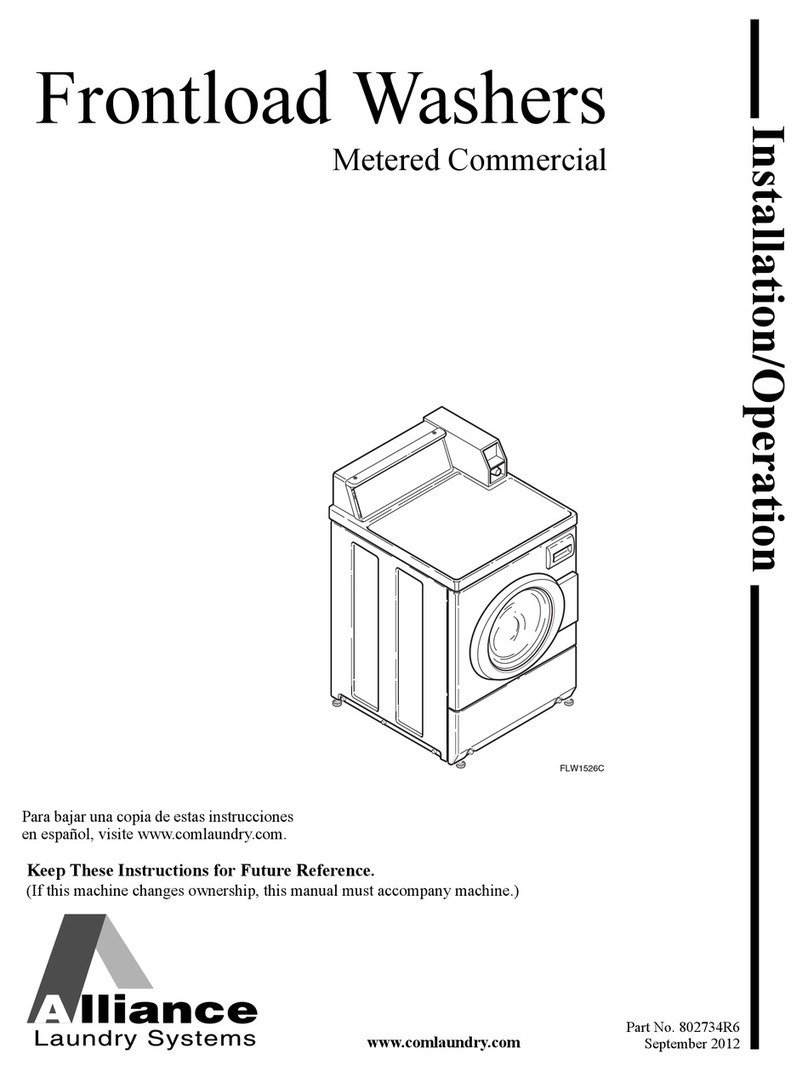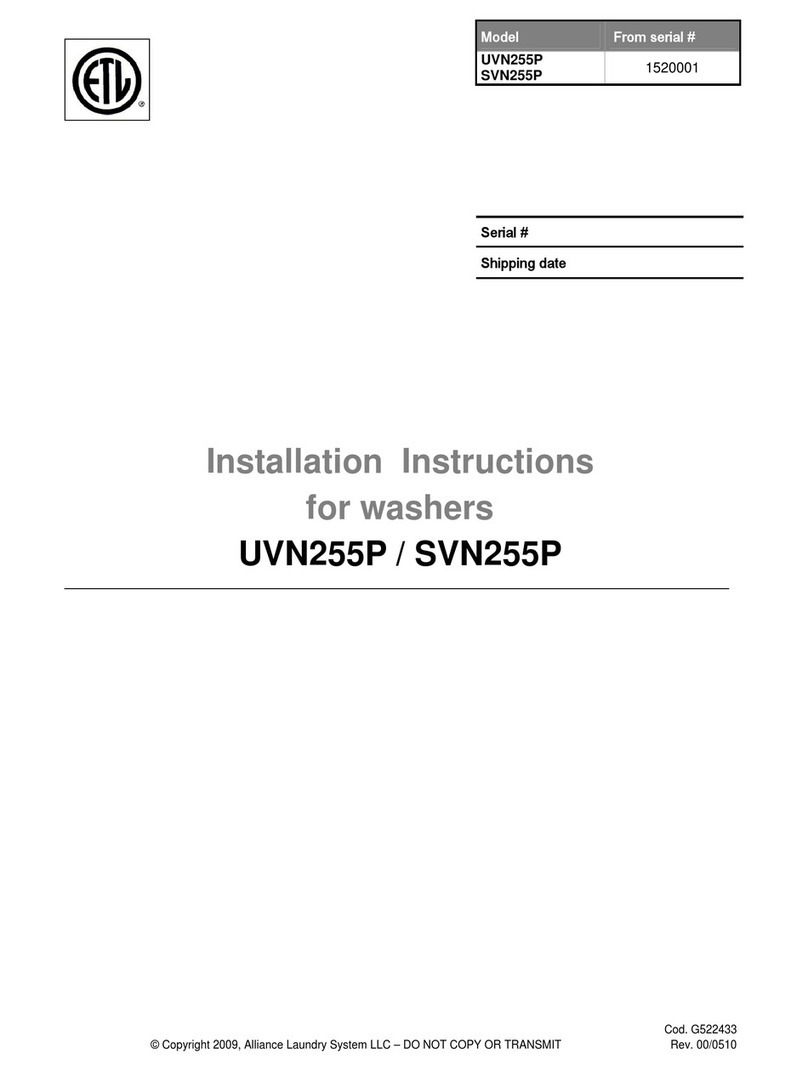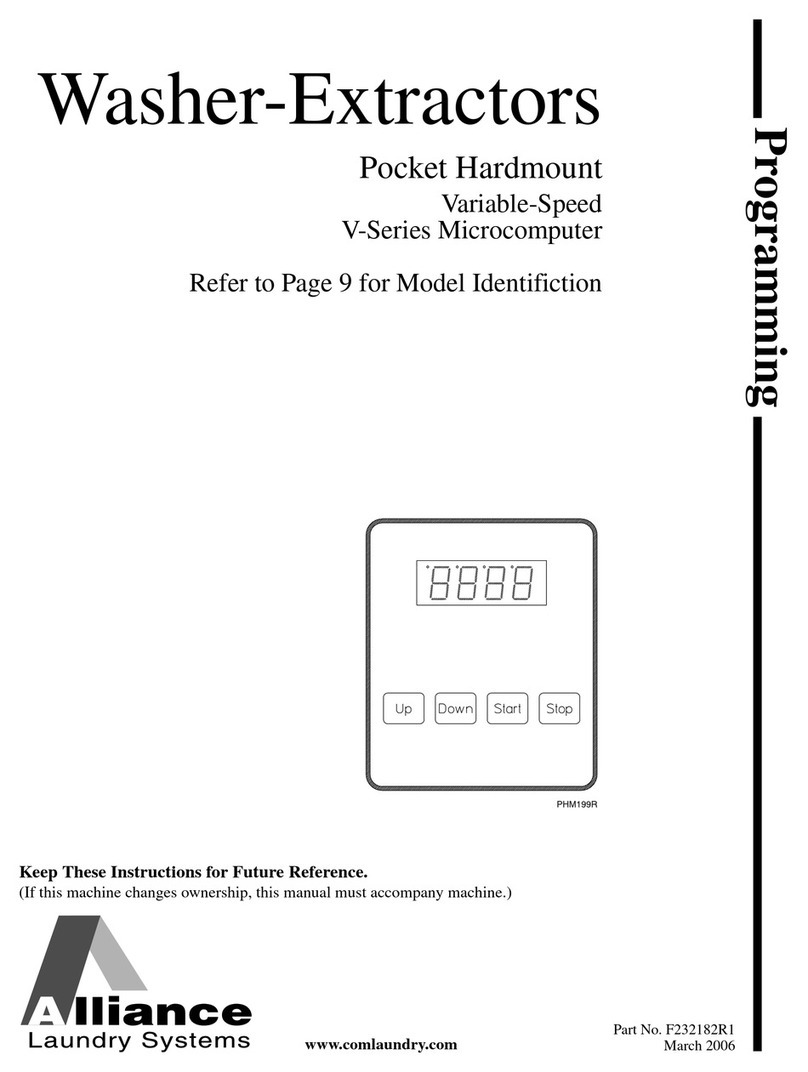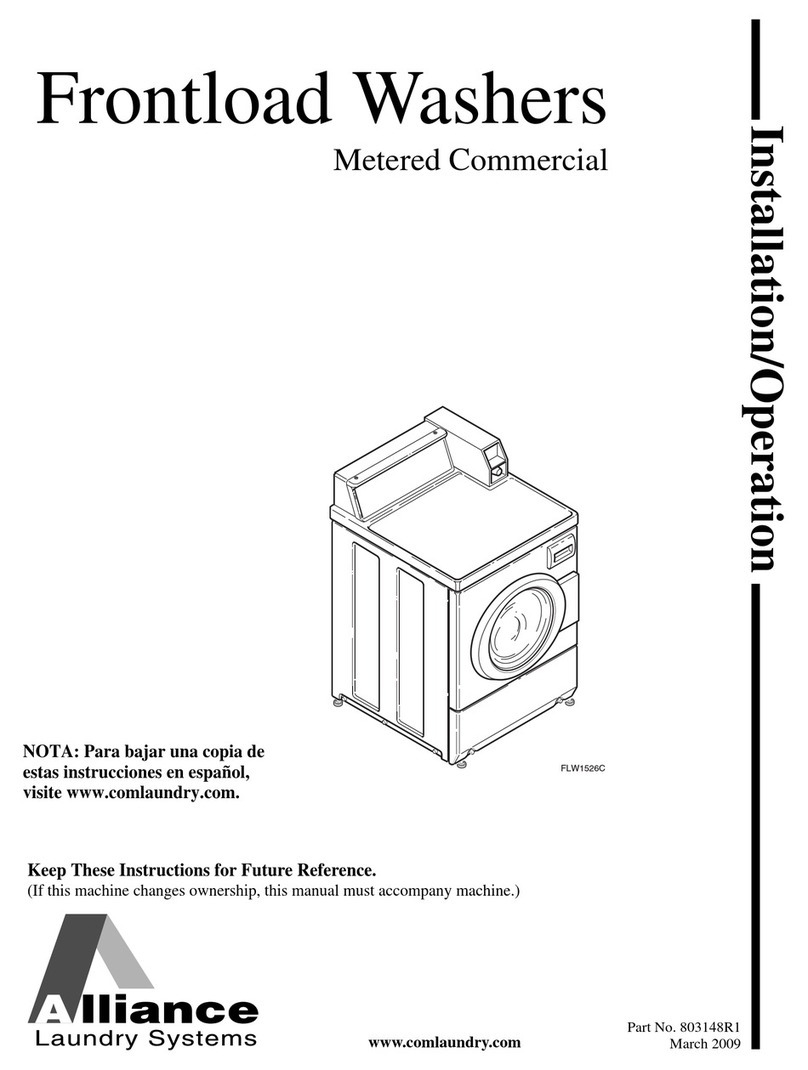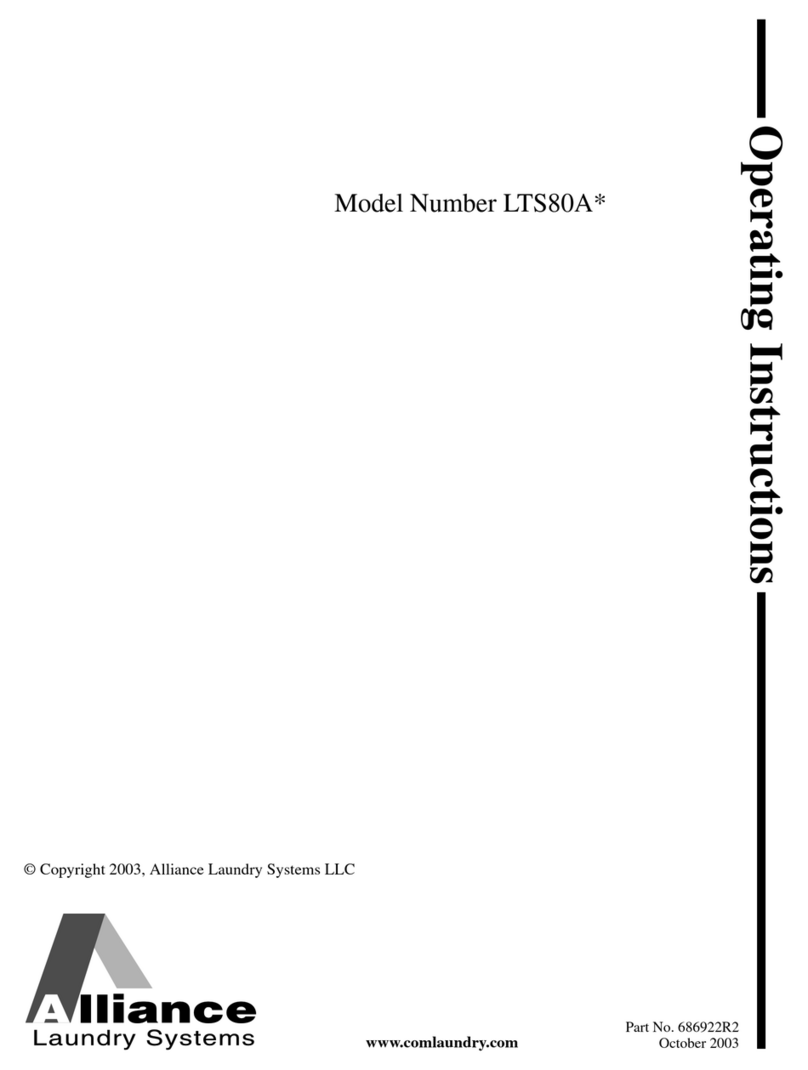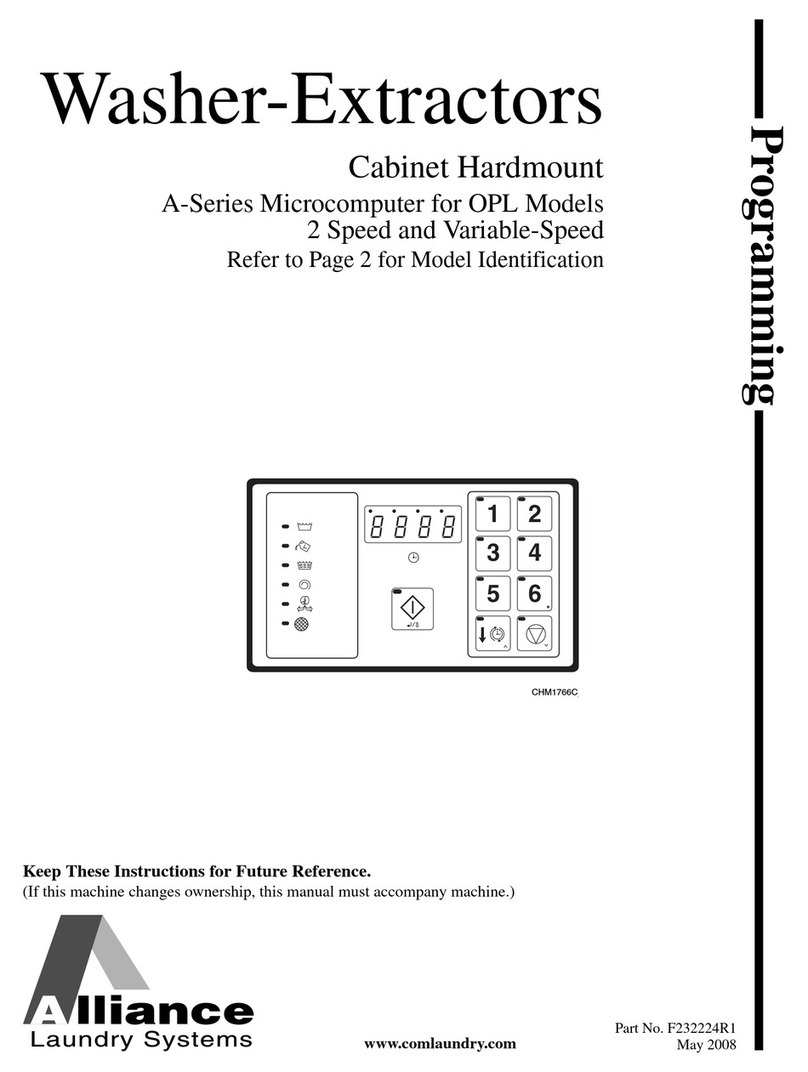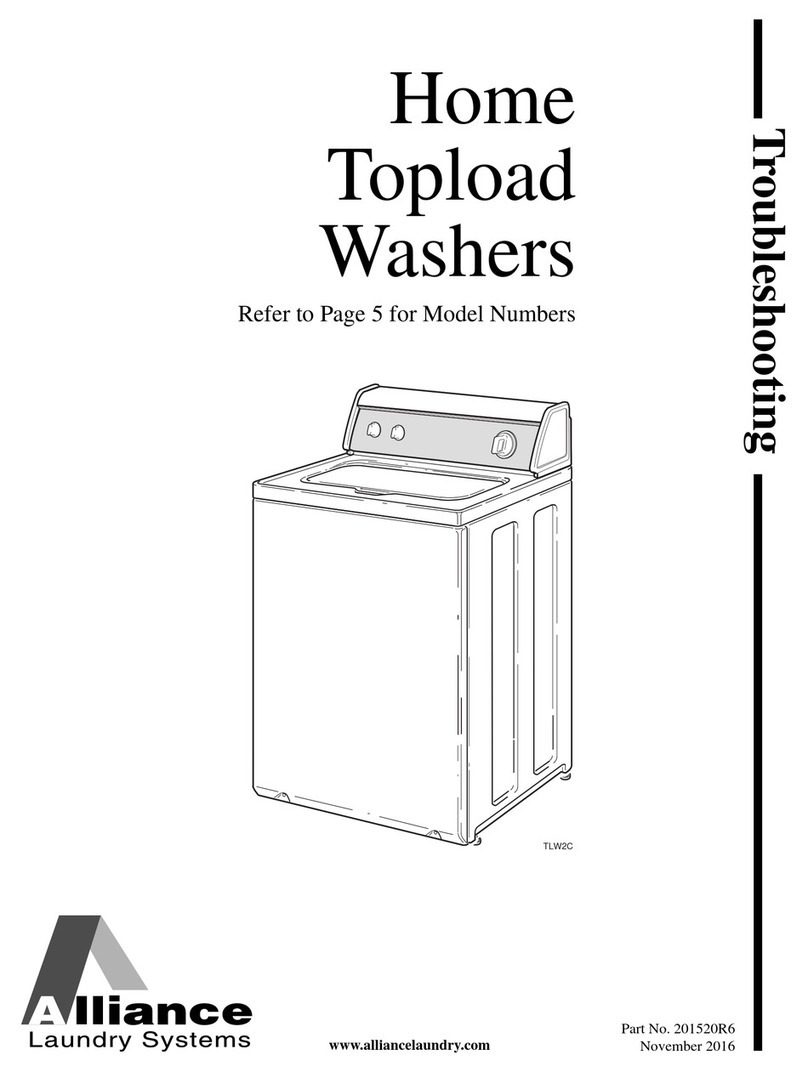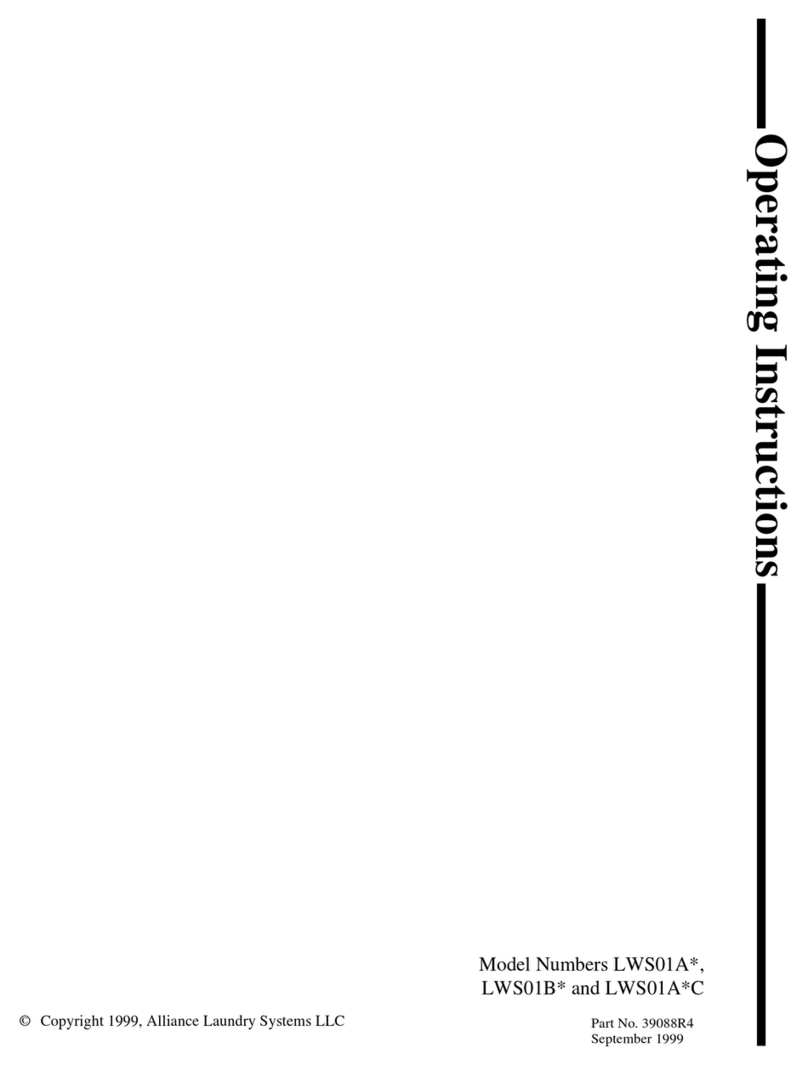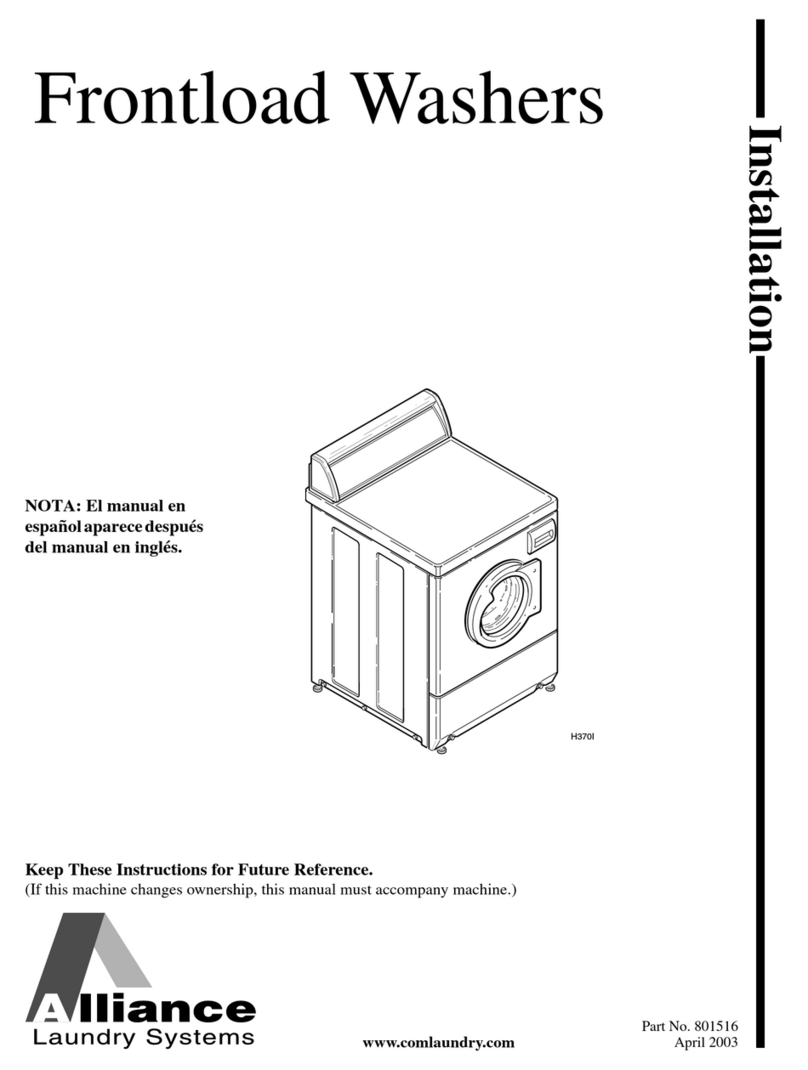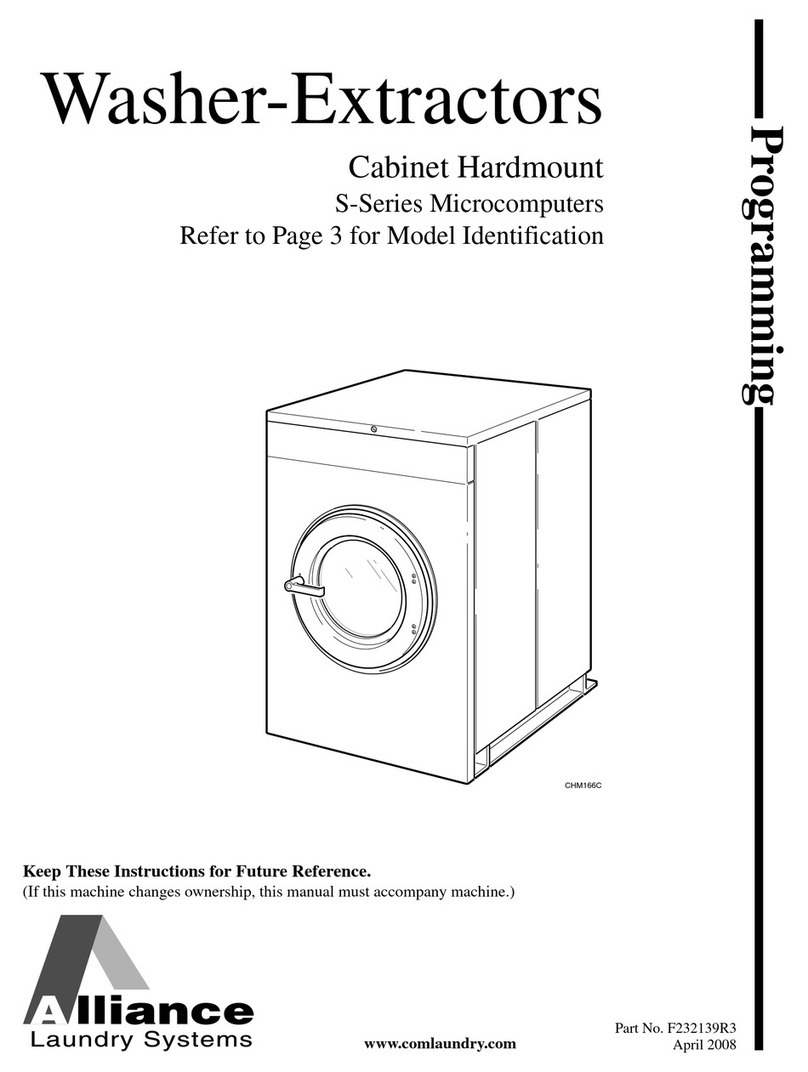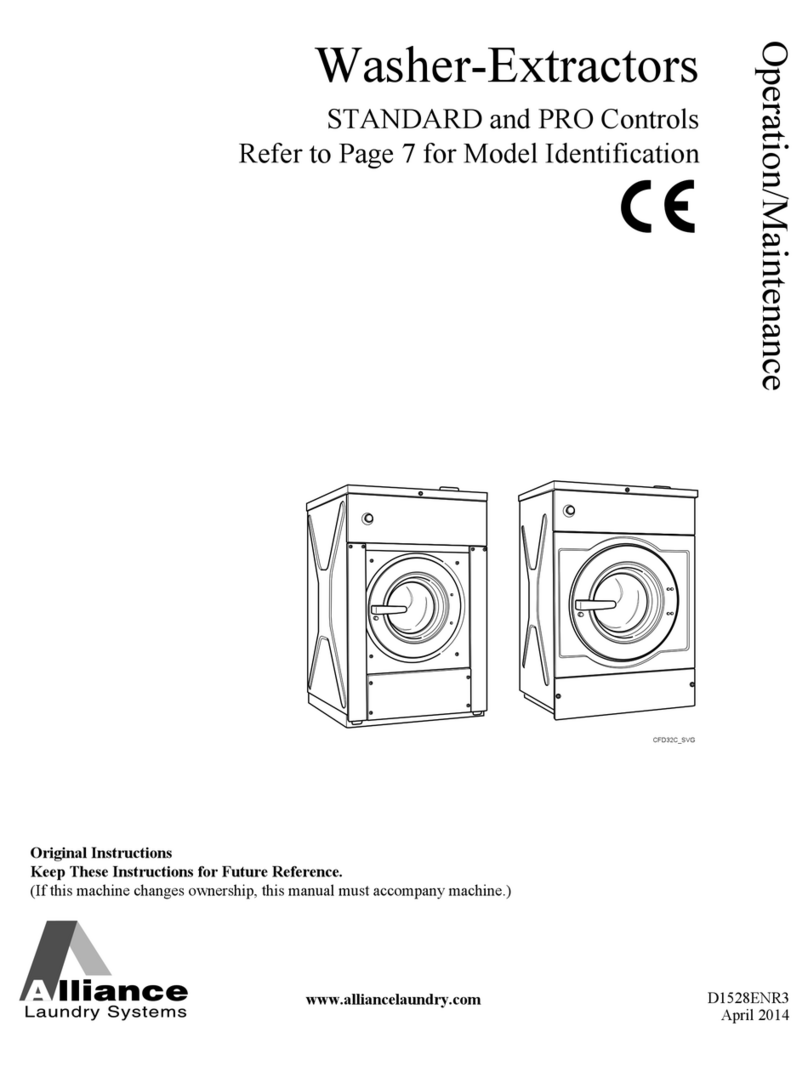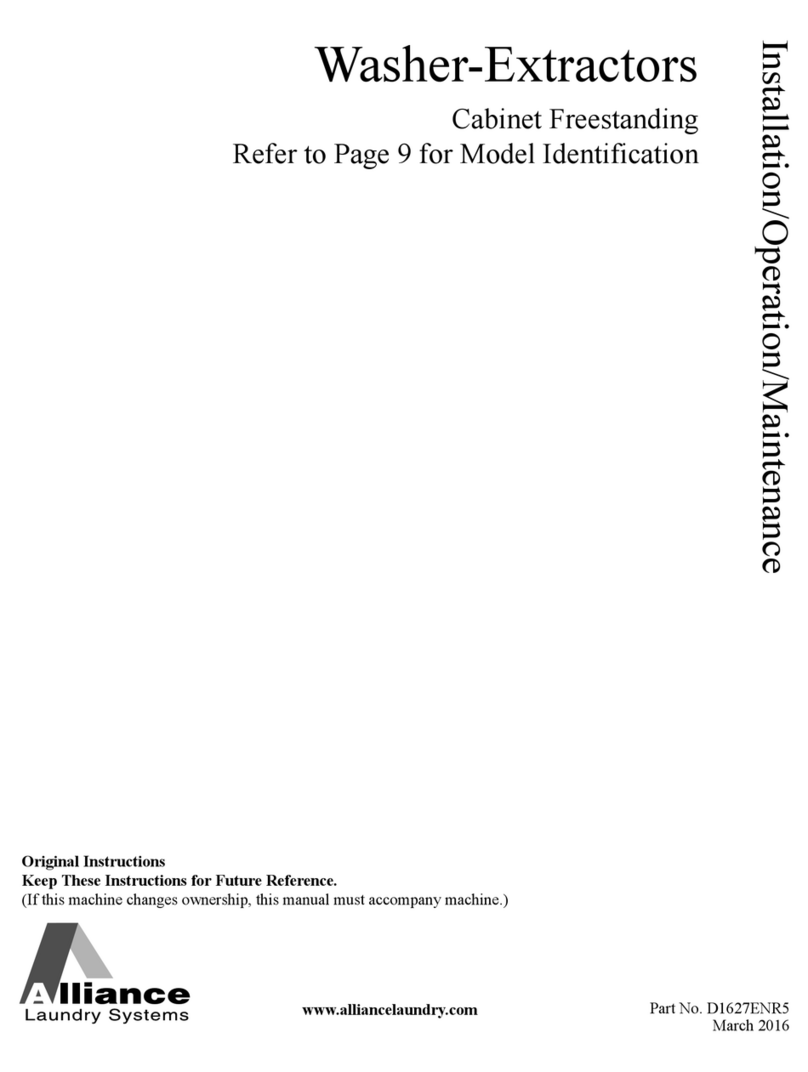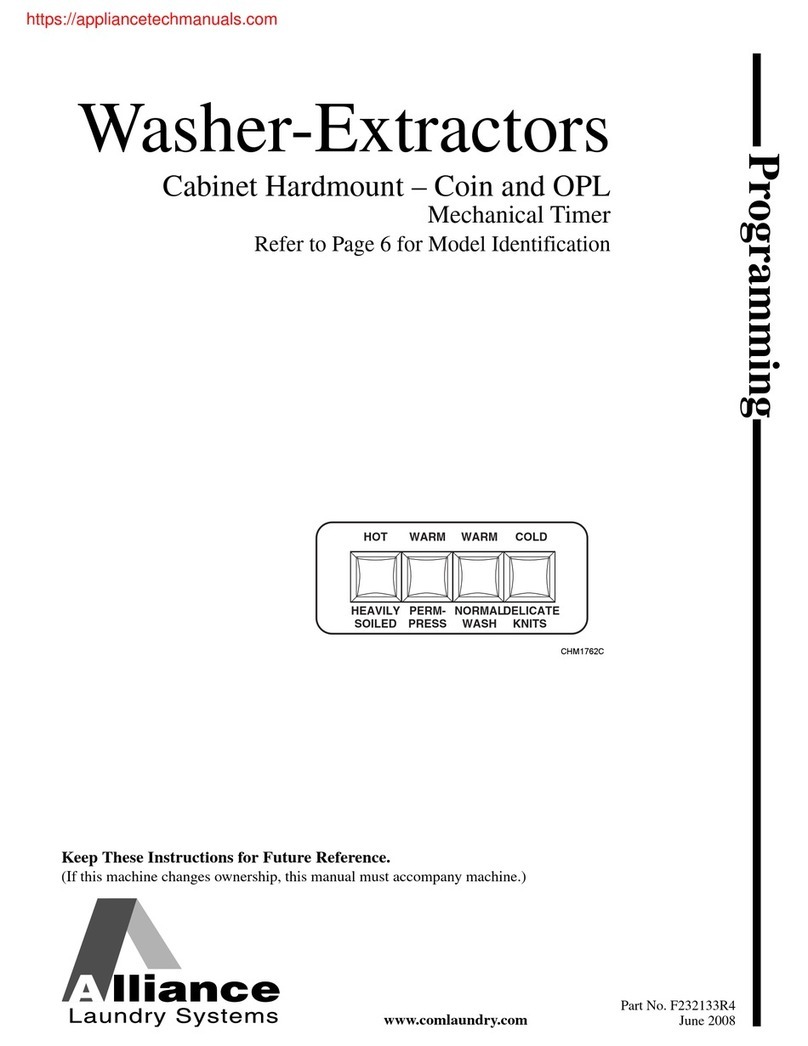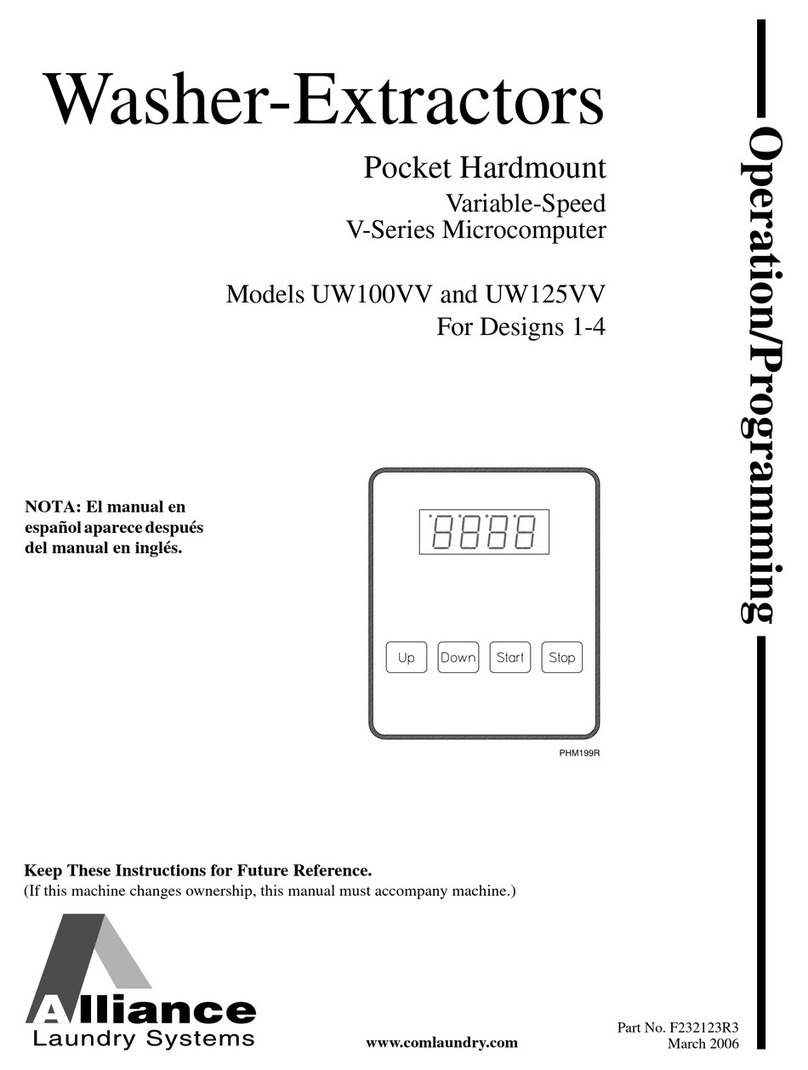
8800793
Section 2 Introduction
© Copyright, Alliance Laundry Systems LLC –DO NOT COPY or TRANSMIT
While water fills the inner basket, a column of air is
trapped in a pressure bulb and hose. The air pressure
continues to increase as the inner basket fills with
water until it is great enough to activate the pressure
switch. Then the pressure switch causes the wash fill
to stop and starts the reversing rotational washing
cycle.
The reversing rotational cycle tumbles the clothing in a
clockwise direction for a period of 20 seconds, pauses
for 9 seconds and then tumbles the clothing in a
counterclockwise direction for 10 seconds. This action
continues until the completion of the wash cycle
selected on the timer.
Upon completion of the wash cycle, the machine goes
into a rinse cycle. The rinse cycle consists of a spin
mode that removes the majority of the detergent water
from the clothing and also activates the electric water
pump which removes the wash water. Fresh
temperature selected water is brought into the inner
basket via the mixing valve, the pressure switch shuts
off the water and then a rinse cycle starts. The rinse
cycle consists of a tumble reversing action similar to
the washing cycle for a pre-determined amount of
time, a spin mode, and includes water being pumped
out and fresh water being brought into the washer.
Several of these rinse cycles will take place, based
upon the operator timer wash type selection and the
optional activation of the “Extra Rinse”switch selector
on the control panel.
After all the rinse cycles have been completed, the
washer goes into a 1059 rpm final spin cycle for 90
seconds to extract as much water as possible from the
clothing, preparing them for the dryer. When this fast
spin cycle is completed, the washer goes into a fluff
tumble mode similar to agitate, only without water.
Operation stops and the loading door interlock is
deactivated allowing operator entry into the washer.
Technical
The basic operational controls of this washer consist of
the motor control logic board, timer, pressure switch,
temperature switch, D.C. motor and electric pump.
The principle of operation remains the same as other
washing machines. The door locks and starts the timer.
The timer starts the machine process by first having
the electronic control activate the dual water inlet
mixing valve which starts to fill the washer via the
dispenser mixing valve. The water temperature is
determined by the operator-selected temperature
switch position, which selects the hot, cold or both
mixing valves. The second step is adding the detergent
and other washing ingredients. This process continues
until the air pressure, via the pressure bulb and hose,
activates the pressure switch, which overrides the
timer fill command.
The timer continues its rotational cycle, which then
sends the command to the motor control board to start
the timer rotator. The tumble rotating action is a
specific wash cycle rotation, pause and then reverse
rotation. This process continues for an operator’s
selected period of time.
The next command mode the timer signals to the
motor control board is to start the rinse cycle. This
cycle signals the electric pump to turn on and direct
the wash water out of the washer. The motor control
board then commands the motor to go into a faster spin
cycle in an attempt to remove a reasonable amount of
water out of the clothing. The spin cycle stops and
then adds fresh rinse water into the washer via the inlet
mixing valve and dispenser hose. After the pressure
switch shuts off the water inlet mixing valve, the
motor control board commands the motor to start the
normal wash rotational, pause, reverse direction
process for a timer-controlled amount of time. This
rinse cycle is completed twice unless the extra rinse
switch has been selected by the operator. Another rinse
cycle takes place each time the extra rinse switch is
selected.
The next portion of the wash cycle is the spin cycle. In
this cycle the control board turns the electric pump on
to remove the rinse water from the tub. The washer
will spin at a distribution speed of 90 rpm until the
pressure switch is satisfied as empty. The washer then
goes to a 500 rpm spin for 30 seconds and returns to
the 90 rpm distribution speed for another 30 seconds.
This allows the motor control board to “sense”the out-
of-balance condition of the load. This sequence is
repeated any time the washer attempts to go to a spin
speed. At this time the washer then goes into a final
spin mode of 650 rpm for approximately 5 minutes
and ramps up to 1059* rpm for the remaining 90
seconds.
*(For Regular and Rinse and Spin cycles only).
